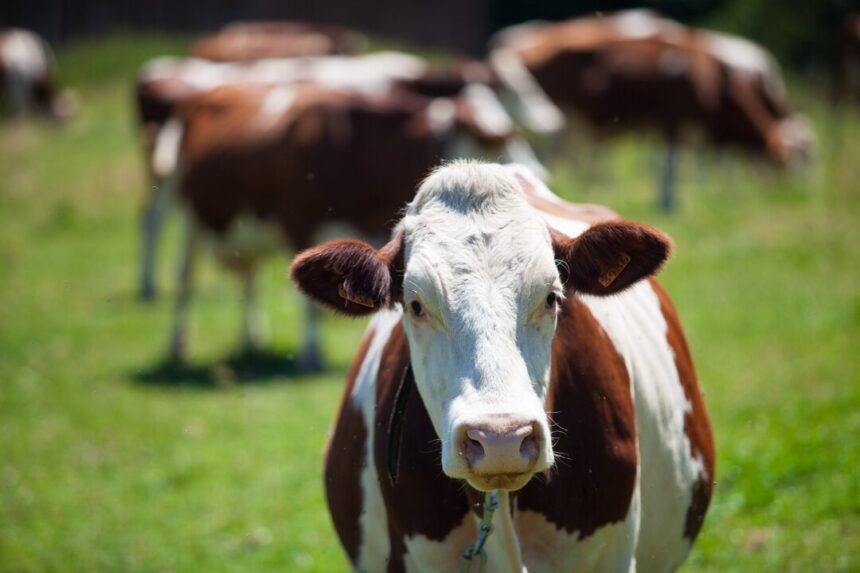Guernsey cattle, with their distinctive reddish-brown and white markings and gentle disposition, are a popular choice for dairy farming in South Africa. Renowned for their exceptional milk quality, heat tolerance, and efficient feed conversion, Guernsey cattle offer numerous advantages to dairy farmers. Whether you’re considering breeding or farming Guernsey cattle in South Africa, understanding key aspects of their management and care is essential for success. In this article, we’ll explore 10 important things you should know about breeding and farming Guernsey cattle in South Africa.
- Guernsey Characteristics:
Guernsey cattle are easily recognizable by their striking reddish-brown and white coat coloration, known as “fawn and white.” They have a medium-sized frame, with females typically weighing between 450 to 550 kilograms and bulls weighing between 700 to 900 kilograms. Guernseys are renowned for their docile temperament, making them easy to handle and manage on the farm. - Milk Production:
Guernsey cattle are highly regarded for their exceptional milk quality, characterized by high butterfat and protein content. Guernsey milk is rich and creamy, making it ideal for producing cheese, butter, and other dairy products. On average, Guernsey cows produce between 6,000 to 8,000 kilograms of milk per lactation, with some high-producing cows surpassing 10,000 kilograms. - Adaptability:
One of the key advantages of Guernsey cattle is their adaptability to various environmental conditions. They thrive in both temperate and subtropical climates, making them well-suited to the diverse landscapes of South Africa. Guernseys have excellent heat tolerance and adapt well to grazing systems, making them an attractive choice for dairy farming in regions with hot summers. - Grazing and Feeding:
Guernsey cattle are well-suited to grazing-based feeding systems, thriving on a diet of pasture grasses supplemented with high-quality forage and concentrates as needed. Proper grazing management and nutrition are essential for maximizing milk production and cow health. Guernsey cows have efficient feed conversion rates, making them economical to feed compared to some other dairy breeds. - Health and Disease Management:
Maintaining the health and well-being of Guernsey cattle is paramount for successful dairy farming. This includes regular vaccinations, deworming, parasite control, and preventive measures against common cattle diseases such as mastitis, ketosis, and metabolic disorders. Routine health checks and timely veterinary care are essential for ensuring the longevity and productivity of Guernsey cows. - Breeding Objectives:
When breeding Guernsey cattle in South Africa, farmers typically focus on improving specific traits such as milk production, butterfat content, conformation, and udder health. Selective breeding programs aim to enhance desirable traits while maintaining genetic diversity and adaptability to local environmental conditions. - Reproduction and Calving:
Guernsey cows are known for their fertility and ease of calving, with most cows calving unassisted. Proper reproductive management, including regular estrus detection, artificial insemination, and bull selection, is essential for maximizing breeding efficiency and achieving high conception rates. Timely calving intervals and proper maternity care are crucial for ensuring the health and vitality of newborn calves. - Milk Marketing and Sales:
Guernsey milk is highly sought after by consumers and artisanal dairy processors for its superior quality and flavor. Dairy farmers can market Guernsey milk and dairy products directly to consumers through on-farm sales, farmers’ markets, and specialty retailers. Additionally, partnering with local cheese makers and dairy processors can create value-added opportunities for Guernsey dairy products in the marketplace. - Herd Management and Record Keeping:
Effective herd management and record-keeping practices are essential for monitoring the performance and productivity of Guernsey cattle. This includes maintaining detailed records of breeding, calving, milk production, health treatments, and financial transactions. By analyzing data and trends, dairy farmers can make informed management decisions to optimize herd performance and profitability. - Support and Resources:
For farmers interested in breeding and farming Guernsey cattle in South Africa, there are various resources and support networks available. These include breed associations, agricultural extension services, dairy cooperatives, and online forums where farmers can access information, technical assistance, and networking opportunities to support their Guernsey farming endeavors.
Breeding and farming Guernsey cattle offer numerous opportunities for dairy farmers in South Africa. With their exceptional milk quality, adaptability, and docile temperament, Guernsey cattle are well-suited to the diverse landscapes and climatic conditions of the country. By understanding key aspects of Guernsey management, including milk production, adaptation, health care, breeding, and marketing, dairy farmers can capitalize on the breed’s potential and contribute to the growth and sustainability of South Africa’s dairy industry.
Join 'Farmers Mag' WhatsApp Channel
Get the latest Farming news and tips delivered straight to your WhatsApp
CLICK HERE TO JOIN






